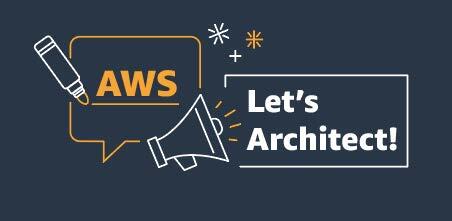AWS Architecture Blog
Tenant portability: Move tenants across tiers in a SaaS application
In today’s fast-paced software as a service (SaaS) landscape, tenant portability is a critical capability for SaaS providers seeking to stay competitive. By enabling seamless movement between tiers, tenant portability allows businesses to adapt to changing needs. However, manual orchestration of portability requests can be a significant bottleneck, hindering scalability and requiring substantial resources. As […]
Introducing the Māori Data Lens for the Well-Architected Framework
In Aotearoa New Zealand, we have been listening and learning to better understand Māori aspirations when using cloud technology. We have been learning from Māori customers, partners, and advisors who have helped us on this journey. A common theme was how to safeguard Māori data in a digital world. Together with a group of Māori […]
Let’s Architect! Designing Well-Architected systems
The design of cloud workloads can be a complex task, where a perfect and universal solution doesn’t exist. We should balance all the different trade-offs and find an optimal solution based on our context. But how does it work in practice? Which guiding principles should we follow? Which are the most important areas we should […]
Simplify and automate bill processing with Amazon Bedrock
This post was co-written with Shyam Narayan, a leader in the Accenture AWS Business Group, and Hui Yee Leong, a DevOps and platform engineer, both based in Australia. Hui and Shyam specialize in designing and implementing complex AWS transformation programs across a wide range of industries. Enterprises that operate out of multiple locations such as […]
Announcing updates to the AWS Well-Architected Framework guidance
We are excited to announce the availability of an enhanced AWS Well-Architected Framework. In this update, you’ll find expanded guidance across all six pillars of the Framework: Operational Excellence, Security, Reliability, Performance Efficiency, Cost Optimization, and Sustainability. In this release, we updated the implementation guidance for the new and existing best practices to be more prescriptive. This includes enhanced recommendations and steps […]
Let’s Architect! Migrating to the cloud with AWS
In today’s digital world, businesses are increasingly turning to the cloud for its scalability, agility, and cost-effectiveness. Migrating your data center to the cloud can be a daunting task, but with the right approach and tools, it can be a successful journey. This Let’s Architect! blog post will guide you through the process of migrating […]
Genomics workflows, Part 7: analyze public RNA sequencing data using AWS HealthOmics
Genomics workflows process petabyte-scale datasets on large pools of compute resources. In this blog post, we discuss how life science organizations can use Amazon Web Services (AWS) to run transcriptomic sequencing data analysis using public datasets. This allows users to quickly test research hypotheses against larger datasets in support of clinical diagnostics. We use AWS […]
Let’s Architect! Learn About Machine Learning on AWS
A data-driven approach empowers businesses to make informed decisions based on accurate predictions and forecasts, leading to improved operational efficiency and resource optimization. Machine learning (ML) systems have the remarkable ability to continuously learn and adapt, improving their performance over time as they are exposed to more data. This self-learning capability ensures that organizations can […]
Deploy Stable Diffusion ComfyUI on AWS elastically and efficiently
Introduction ComfyUI is an open-source node-based workflow solution for Stable Diffusion. It offers the following advantages: Significant performance optimization for SDXL model inference High customizability, allowing users granular control Portable workflows that can be shared easily Developer-friendly Due to these advantages, ComfyUI is increasingly being used by artistic creators. In this post, we will introduce […]
Creating an organizational multi-Region failover strategy
AWS Regions provide fault isolation boundaries that prevent correlated failure and contain the impact from AWS service impairments to a single Region when they occur. You can use these fault boundaries to build multi-Region applications that consist of independent, fault-isolated replicas in each Region that limit shared fate scenarios. This allows you to build multi-Region […]






